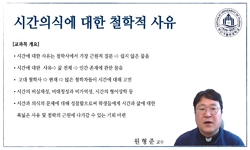This study focuses on the color dot paintings of Kwak In-sik (1919-1988), a Mono-ha artist active from the late 1940s to the mid-1980s, and in order to shed light on his artistic world, the researcher deals with the thought and idea of Gilles Deleuze ...
http://chineseinput.net/에서 pinyin(병음)방식으로 중국어를 변환할 수 있습니다.
변환된 중국어를 복사하여 사용하시면 됩니다.
- 中文 을 입력하시려면 zhongwen을 입력하시고 space를누르시면됩니다.
- 北京 을 입력하시려면 beijing을 입력하시고 space를 누르시면 됩니다.

곽인식의 색점회화와 들뢰즈의 시간론에 나타난 역사이념 -배채법(背彩法)의 ‘차이’와 ‘다양체’를 중심으로- = Historical Perspective of Kwak In-sik's Color Dot Painting and Deleuze's Theory of Time -Focusing on ‘Difference’ and ‘Manifold’ of Baechae technique-
한글로보기https://www.riss.kr/link?id=A109735575
-
저자
유가연 (경희대)
- 발행기관
- 학술지명
- 권호사항
-
발행연도
2025
-
작성언어
Korean
-
주제어
Kwak In-sik ; Deleuze ; Color Dot Painting ; Baechae technique(Reversed coloring technique) ; Difference ; Time ; Manifold ; 곽인식 ; 들뢰즈 ; 색점회화 ; 배채법(背彩法) ; 차이 ; 시간 ; 다양체
-
등재정보
KCI등재
-
자료형태
학술저널
-
수록면
113-140(28쪽)
- 제공처
-
0
상세조회 -
0
다운로드
부가정보
다국어 초록 (Multilingual Abstract)
This study focuses on the color dot paintings of Kwak In-sik (1919-1988), a Mono-ha artist active from the late 1940s to the mid-1980s, and in order to shed light on his artistic world, the researcher deals with the thought and idea of Gilles Deleuze (1925-1995), a contemporary French philosopher who lived in the same era and asked similar questions about the times. They each ask existential questions about ‘time’ through their own language and logic. They present propositions such as how to signify time and lead history to practice, what other sources and forms of time are for history beyond the narrow and representational concept of time, and how history actually moves and what forms and systems it has. Deleuze’s difference and manifold are revealed to Kwak In-sik through the color dot painting technique, and through the form of self-negation, he asks fundamental questions about ‘what is freedom’. The attempt to interpret Kwak In-sik's artistic world in a Deleuzian manner is significant in that it enriches the interpretation of his artistic world, which has not been sufficiently studied despite its importance in art history.
동일학술지(권/호) 다른 논문
-
- 예술과미디어학회
- 정현목
- 2025
- KCI등재
-
복잡계 패러다임과 21세기 한국 추상미술 : ‘양자 추상’ 개념의 제안과 초기 논의
- 예술과미디어학회
- 이재걸
- 2025
- KCI등재
-
- 예술과미디어학회
- 오제성
- 2025
- KCI등재
-
- 예술과미디어학회
- 김주옥
- 2025
- KCI등재




 KCI
KCI KISS
KISS






